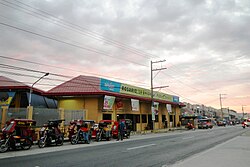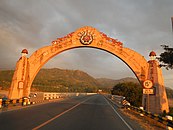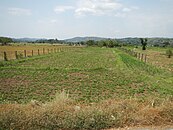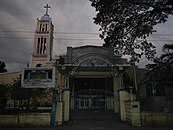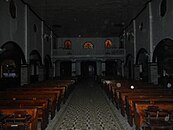
La Union, officially the Province of La Union, is a province in the Philippines located in the Ilocos Region in the Island of Luzon. Its capital is the City of San Fernando, which also serves as the regional center of the Ilocos Region.

Aringay , officially the Municipality of Aringay, is a second class municipality in the province of La Union, Philippines. According to the 2020 census, it has a population of 50,380 people.

San Fernando City, officially the City of San Fernando, is a 3rd class component city and capital of the province of La Union, Philippines. According to the 2020 census, it has a population of 125,640 people.
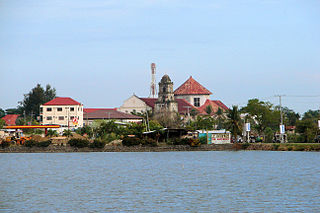
Binmaley, officially the Municipality of Binmaley, is a 1st class municipality in the province of Pangasinan, Philippines. According to the 2020 census, it has a population of 86,881 people.

Caba, officially the Municipality of Caba, is a 4th class municipality in the province of La Union, Philippines. According to the 2020 census, it has a population of 23,119 people.

Sison, officially the Municipality of Sison, is a 3rd class municipality in the province of Pangasinan, Philippines. The town's original name was Alava. According to the 2020 census, it has a population of 52,320 people.
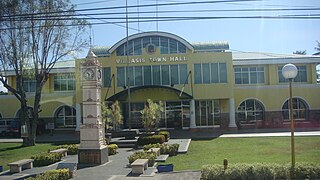
Villasis, officially the Municipality of Villasis, is a 1st class municipality in the province of Pangasinan, Philippines. According to the 2020 census, it has a population of 65,047 people.

Agoo, officially the Municipality of Agoo, is a 1st class municipality in the province of La Union, Philippines. According to the 2020 census, it has a population of 66,028 people.

Bacnotan, officially the Municipality of Bacnotan, is a 1st class municipality in the province of La Union, Philippines. According to the 2020 census, it has a population of 44,388 people.

Pugo, officially the Municipality of Pugo, is a 5th class municipality in the province of La Union, Philippines. According to the 2020 census, it has a population of 19,337 people.

Santo Tomas, officially the Municipality of Santo Tomas, is a 4th class municipality in the province of La Union, Philippines. According to the 2020 census, it has a population of 40,846 people.

Alaminos, officially the City of Alaminos, is a 4th class component city in the province of Pangasinan, Philippines, and is known for being the home of the Hundred Islands National Park, which is composed of 124 islands and is located off the coast of Barangay Lucap. According to the 2020 census, it has a population of 99,397 people. The city is named after Juan Alaminos y de Vivar, a former governor-general of the Philippines.

Bani, officially the Municipality of Bani, is a 2nd class municipality in the province of Pangasinan, Philippines. According to the 2020 census, it has a population of 52,603 people.

Bugallon, officially the Municipality of Bugallon, is a 2nd class municipality in the province of Pangasinan, Philippines. According to the 2020 census, it has a population of 74,962 people.

Manaoag, officially the Municipality of Manaoag, is a 1st class municipality in the province of Pangasinan, Philippines. According to the 2020 census, it has a population of 76,045 people.
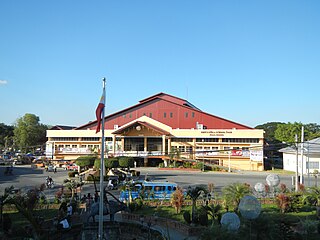
Rosales, officially the Municipality of Rosales, is a 1st class municipality in the province of Pangasinan, Philippines. According to the 2020 census, it has a population of 66,711 people.
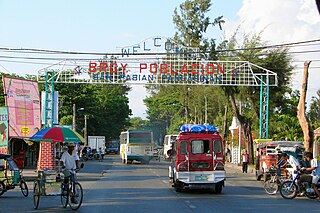
San Fabian, officially the Municipality of San Fabian, is a 1st class municipality in the province of Pangasinan, Philippines. According to the 2020 census, it has a population of 87,428 people.

San Jacinto, officially the Municipality of San Jacinto, is a 3rd class municipality in the province of Pangasinan, Philippines. According to the 2020 census, it has a population of 44,351 people.

Santo Tomas, officially the Municipality of Santo Tomas, is a 5th class municipality in the province of Pangasinan, Philippines. According to the 2020 census, it has a population of 14,878 people.

Umingan, officially the Municipality of Umingan, is a 1st class municipality in the province of Pangasinan, Philippines. According to the 2020 census, it has a population of 77,074 people.
